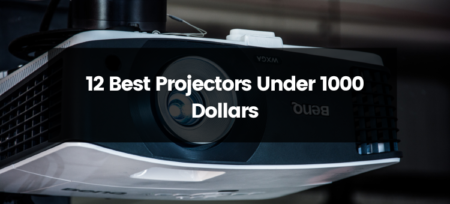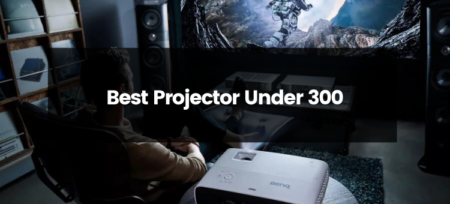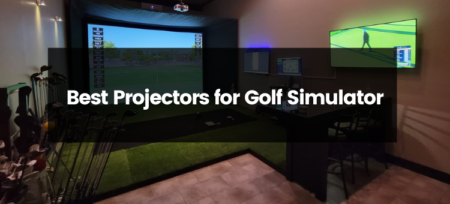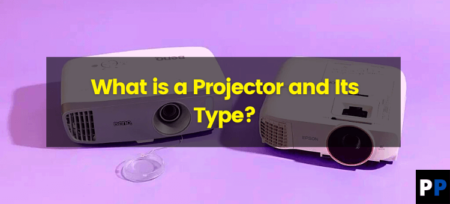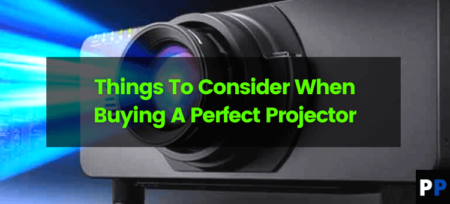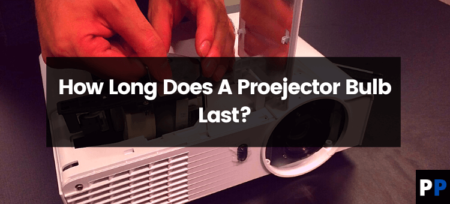An overhead projector shows pictures to the audience. Overhead projectors usually consist of a big box with the most brilliant light source and a cooling fan within the unit. It also contains a massive lens that directs the light. Over the box, usually with a long, folding arm, there is a mirror that directs light towards the front instead of upwards.
Overhead projectors used to be an everyday fixture in classes and business gatherings. Overhead projectors are becoming increasingly replaced with larger computer monitors and LCD-based projectors. Many critics feel that these modern models are more costly, prone to failure, and come with an arduous learning curve as opposed to the older overhead projector. That’s why the overhead projector will continue to be a popular accessory for presentations.
History of Overhead Projectors
The first projector to be used for presentation purposes was not an overhead projector but the opaque one. The opaque projector shows non-transparent materials by shining a powerful illumination over an object viewed from the top. A set comprising prisms, mirrors, or lenses is employed to concentrate on your subject on a display screen.
Opaque projectors need brighter lenses and more giant lamps than overhead projects. Additionally, care should be taken to ensure that the objects aren’t damaged by the heat produced by the lighting source. The most suitable things to be projected and displayed include drawings, book pages, minerals, leaves, and more.
At the beginning and middle of the 20th century, transparent projectors were made to be inexpensive toys for children. They were also promoted as an enlargement tool for artists for the images of photos to be transferred onto an already-prepared canvas. They eventually came into everyday use in talks and presentations.
The modern version in its current form, the Mark IV Opus Opaque Projector by Buhl, still has a cult fan base. In most cases, however, there is more demand for overhead projectors than opaque ones in the current market.
Features of Overhead Projector
All overhead projectors have the same standard features and must be considered the base for your buying choice. The most important aspects are the type of lens and brightness (lumens), lamp life, and obviously, price. Let’s look at how these aspects are measured and comparisons, as well as an additional factor.
Lens Type
The primary factor determining the quality of overhead projection images is the lens utilized. We provide projectors with the most popular lenses: singlet, triplet, and doublet. Image quality improves when you move from the standard singlet lens type to the more advanced triplet lens, but prices generally increase and vice versa.
Brightness (Lumens)
The luminance of each overhead projector is assessed using “lumens typical.” For rooms in which the ambient light could be decreased to a minimum, the standard 2000 lumens should suffice. If you’re projecting in an area where the lighting is essential or projecting images with a lot of detail, the 2,500-lumen range or higher is the recommended amount.
Lamp Life
Every overhead projector comes with an estimated lamp life determined by the number of lumens and the type of lamp. The standard ENX lamp, for instance, has the most extended life, whereas the larger lumens and the more specialization of the other kinds of lights (FXL, EHA, ENG) have shorter lamp lives.
For Buhl, we have observed that their latest and advanced features have given us an advantage compared to 3M and other companies.
Innovation
As an industry leader, 3M has been responsible for several significant technological advances in the field of projectors. Recently, Buhl has seized the initiative and has successfully developed new features such as 360-degree rotating heads, double-fresnel lenses, rack and pinion focus, auto lamp changes, and a Hi-Lo switch. Since some of these inventions are patent-pending, Buhl has gained a competitive advantage in innovation over 3M.
How to Use an Overhead Projector?
Utilizing an overhead projector can be easy if you’re a skilled projectionist, but even if not, you can learn it. It all depends on the type of projector that you’re working with. The procedure will differ in general, but you can set up the projector by mounting it on a secure mounting on the ceiling before turning it on and choosing your input source. Then, you’ll be able to project images or text onto the screen.
Apart from the obvious use for teaching and presentations, There are a variety of innovative uses that can be made use of an overhead projector also. Making your ideas is a fantastic method to get the most value from an overhead projector.
Some creative ideas and applications include:
- Make art by displaying an area that can be drawn on
- Create a video or movie game that you can play in real-time
- Make a beautiful backdrop for photoshoots or creative projects
The Image Projecting Process
Overhead projectors are not able to operate without transparency. Everything projected needs to be printed onto the transparent.
Transparencies are a part of the mechanism for light that is used by overhead projectors. They let the passage of light across them.
To allow your projector to function initially, it has to have a source of power. It is then possible to switch it on and begin to utilize it.
The lamp that is in the base turns on and illuminates the transparent over the cover of glass. The Fresnel lens focuses on the light. It directs light that is reflected from the transparency towards the objective lens inside the head.
The image then reaches the mirror inside the head. The mirror flips the picture over and is pointing at the screen in the opposite direction.
Thank you so much for reading this article, i hope you like the article.

